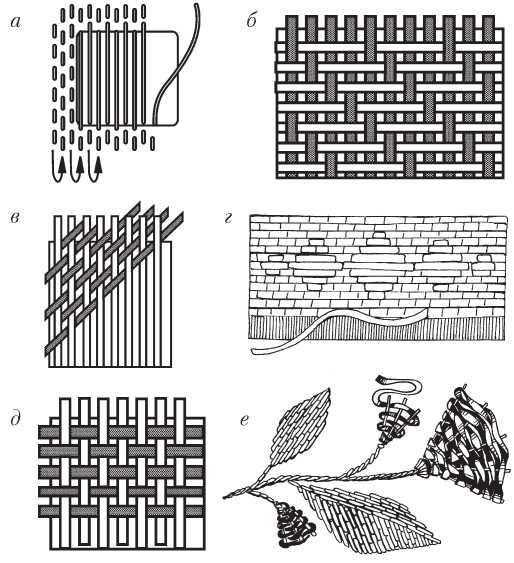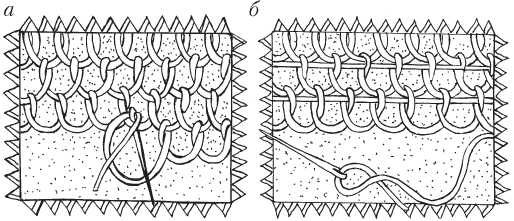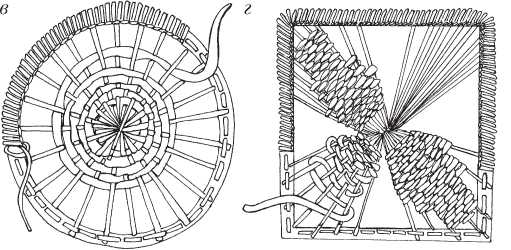It is quite simple. It is used for repairing products, as well as in the stitch, creating leaves, flowers, etc. It can be run in a straight line (Fig. 27 a, b, g, d) or diagonally (Fig. 27V).
First perform longitudinal or transverse stitches along the outline of the drawing. Then lay stitches across or lengthwise, twisting the working yarn at stitches using 1 or multiple threads at once, creating a pattern (Fig. 27E).

Figure 27 a—E. the Seam "darning" and its variations
It is used in mending knitwear and the embroidery of individual parts of the picture.
Panel pattern, seam "forward needle". Output the thread from the left side of the outlined pattern and perform the 1st a number of loops from left to right. Make the remaining rows alternately from right to left and left to right. In embroidery of loops of each row needle and thread use boot loop in the previous row (Fig. 28a).
Sometimes this darn add cross thread. For what, starting from the 2nd row, on the dial needle loops of the previous row and working thread (Fig. 28B).
Crocheted panels perform exactly the same. Edge sheathe looped stitch or linen cushion (Fig. 28, g).





